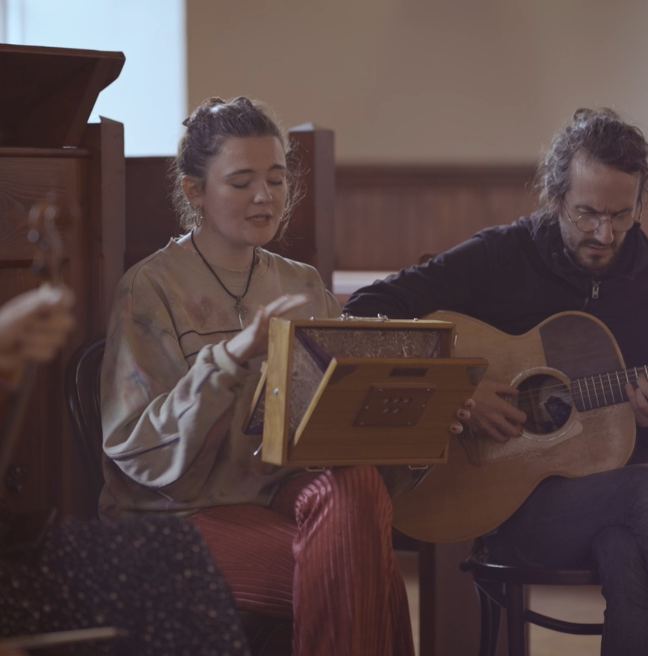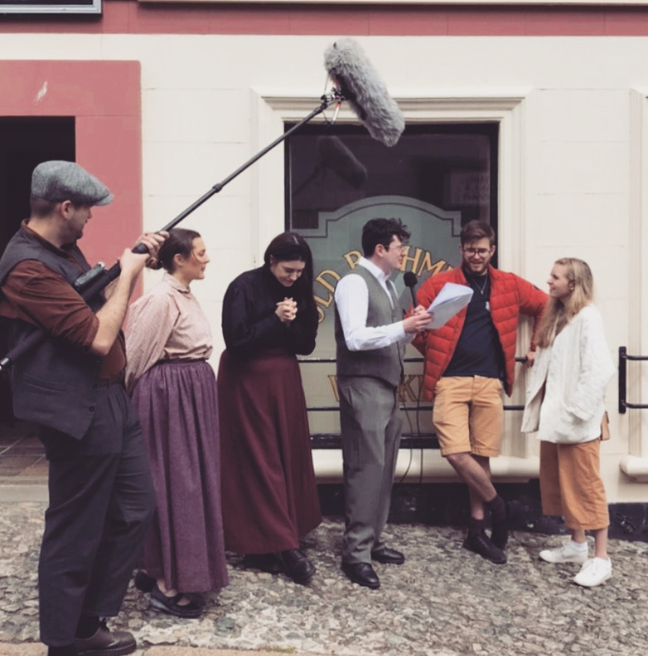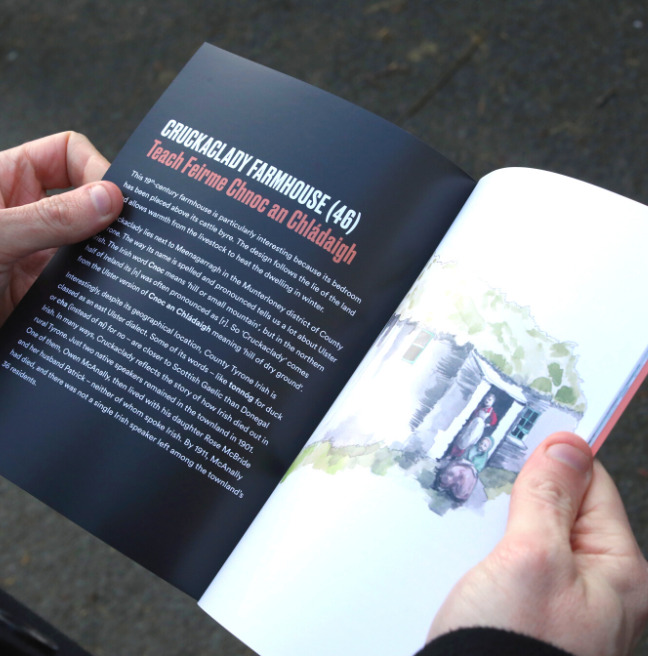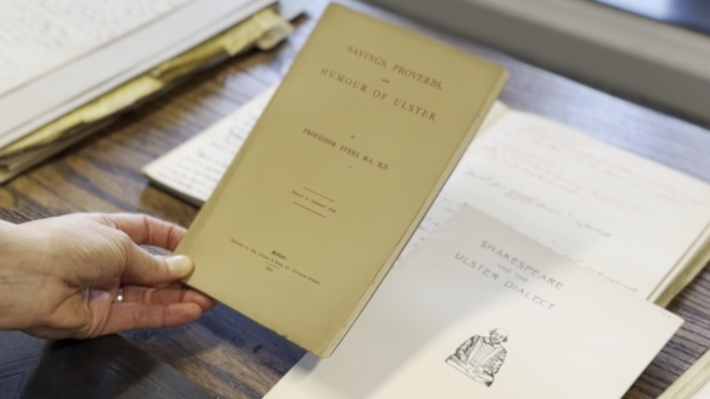
Dúchas agus Dúlra
To highlight the prominence of the Irish Language, Aoife de Bhál held natural history tours of the Ulster Folk Museum to discuss Irish place names and stories that local people told to make sense of the natural world – from hags to hares, to fairy tress and fate.
In midsummer whilst crops are in bloom across the countryside, farmers prepare for the coming harvest period. However, lurking in the hedgerows are the Púca, a mythical changeling who will decide whether the crops will be bountiful for cursed.
This natural history tour looked at the flora and fauna of the site, as well as the folklore and mysticism that comes with this time of year. Visual artist Jasmin Marker showed us how to create images with cameraless photography, using foraged materials from the land.
Lughnasadh - “Loo-na-sa”
Lughnasadh is traditionally celebrated on the 1st of August, halfway between the summer solstice and the autumn equinox. For our ancestors, this would have been one of the least taxing times of the year - between the hay harvest and the grain harvest, with wild berries ripening all around them.
The festival is named after the Gaelic god Lú, a warrior and master craftsman that is also sometimes associated with light and the sun. His other names speak of his prowess and skillmanship; Samildánach (he is equally skilled in many crafts) and Lámhfada (he of the long hand - in reference to his spear throwing abilities).
The customs and rituals that would take place at this time of year across Ireland were focused around one central principle, ensuring the success of the coming harvest. This is encapsulated by the story of the endless struggle for the harvest between Lú and another god, Crom Dubh (the dark crooked one). Crom Dubh seeks to hoard the harvest for themselves - and thus comes to represent blight, famine and poor weather - while Lú fights to ensure its bounty for humanity.
Common Lughnasadh practices included the first cuttings of the corn and picking of the first berries and ceremonial offerings to Lú, climbing mountains (perhaps to be closer to the domain of Lú), horse races, weapons contests and other athletic events, dancing and visiting holy wells amongst others.
Here are some of the species found around the site in August, and their stories:
Driseog (Bramble) - "Drish-oge"
A common sight throughout Ireland, the sméara dubha (blackberries) of driseog have been eaten for millenia in Ireland and across Europe. Sméara dubha are delicious, but careful not to eat them after samhain (halloween), as the Púca (a mischievous fairy spirit) has spat all over them, causing them to rot! During the Táin i.e. the famous cattle raid of Cooley, a young Cúchulainn was said to have smeared blackberry juice onto his chin to give the impression of a beard, so people would think he was old enough to join the battle.
There are many great sayings in Irish about this plant and its berries, such as:
An sméar mullaigh - The very best or cream of the crop, literally ‘the topmost berry’.
Is fearr an driseog na an draighean - Better the bramble than the blackthorn
Is fearr an draighean na an donas. - Better the blackthorn than misfortune.
An té a rachfá sa driseog dom - The person who would go into brambles for me,
Rachainn sa draighean do. - I would go into the blackthorn for them.

Cuileann (Holly) - "Kill-an"
Cuileann is one of the nobles of the wood under old Irish Brehon law, which meant you would pay a high penalty for disturbing it. It is especially associated with the god Lú because of its prickly evergreen leaves and red berries, which were seen as symbols of strength and warriorship. As such, the mature hard timber of this tree was often used for darts, spears and chariot poles.

Bó (Cow) - "Bo"
The cows here are a wonderful site to behold. For hundreds of years in Ireland, cattle were the most valuable animal a household could have. Many people depended on their milk as a main source of food, and there was a huge culture of making various cheeses in Ireland. During the festival ofLughnasadh, cattle were often driven to holy wells and waters. This was thought to protect the livestock from harm and from the ill-magic of the faerie folk.

Úll (Apple) - "Ool"
The orchards at the Ulster Folk Museum are an excellent example of our living heritage. Many places across Ireland, such as Armagh, Louth and Meath, were famous for their apple production and would export fruit to Scotland and further abroad. Apples are symbols of the otherworld. Fertility, replenishment and healing, and are closely associated with the Irish god of the sea Manannán Mac Lir. He supposedly lived on a beautiful, mythical island somewhere off the east coast of Ireland called Tír tairngire (the land of promise). This island was said to be full of trees that bore apples the colour of burned gold and as large as a month old baby’s head! No matter how much one would eat of these apples, they would never get any smaller and could sustain voyagers forever.





